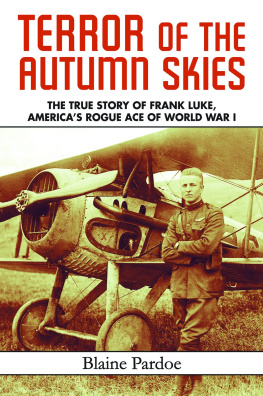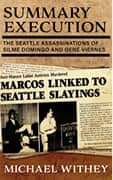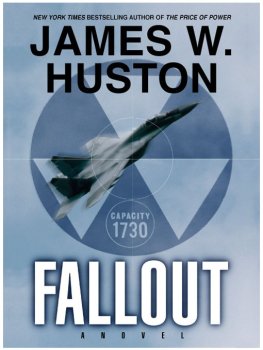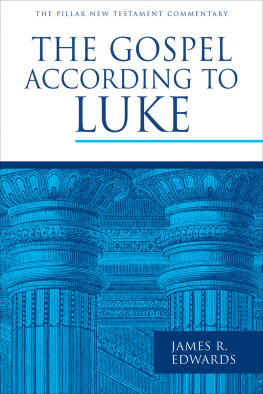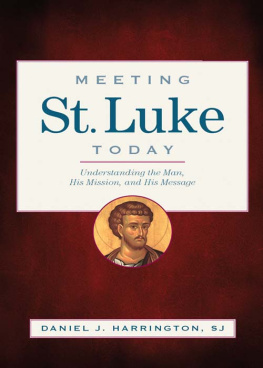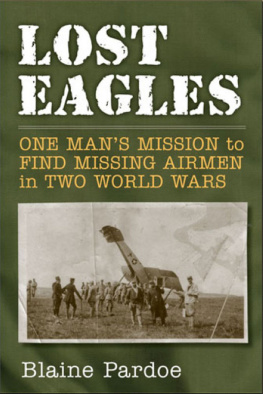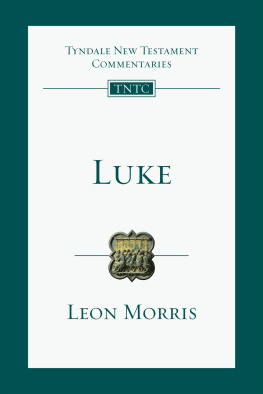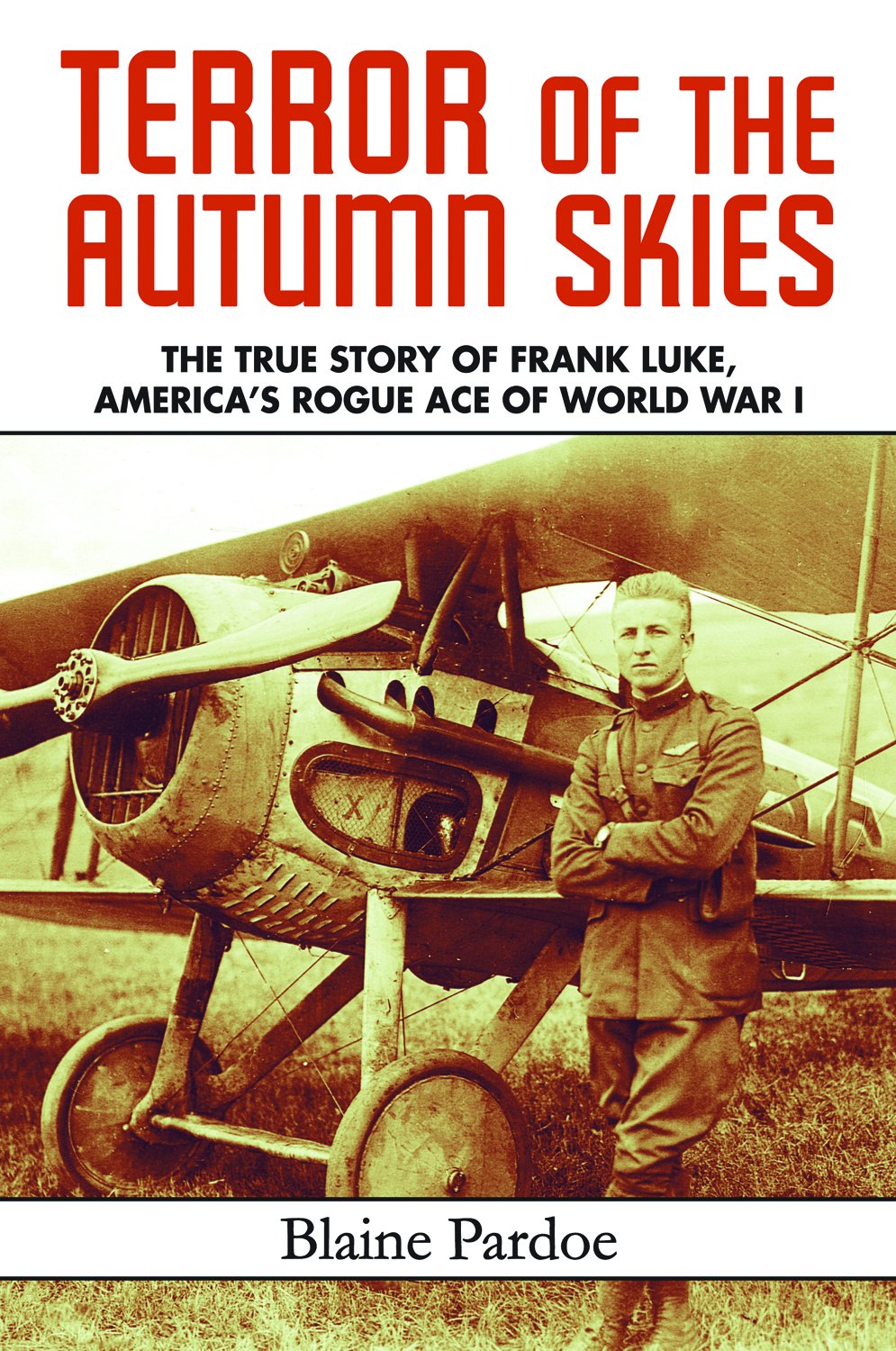Acknowledgments
An enlisted man who served with the 27th at that time had this to add: Frank was a loner, you know. He didnt have much to do with the other pilots. But we got along. He was all right. Boy, could he shoot! Ive seen him come down that road on a motorcycle with a Colt .45 in each hand, shooting at the trees. Hitting them too. All he ever wanted to do was shootpistols, rifles, anything. He never flew back with any shells left; he shot them all at something or other on the other sideanything that moved he used to say.
LEN MORGAN AND R.P. SHANNON, FAMOUS AIRCRAFT: THE PLANES THE ACES FLEW, VOL. I.
T his book took years of research and the contributions of dozens of people to pull together. The words you are going to read are those of the actual people, culled from letters and interviews. Their stories are as truthful as can be validated. I want you, the reader, to experience the life of this young man and the men and women around him. Any errors are unintentional.
This book would not have been possible without the efforts of a number of people. Those that deserve the greatest recognition include:
Jean Armstrong, who gave me a new perspective on research, digging through the genealogy tied to the people who were part of this story.
Tim King, keeper of the faith who is working on a Frank Luke documentary.
Walter Kloss, who is the steward of the Wehner family archives.
Andy Parks of the Lafayette Foundation, easily one of the greatest historic resources on WWI aviation.
Mitch Yockelson at the US National Archives Administration, who helped me wade through both the U.S. and German records.
Jon Guttman, a walking encyclopedia of WWI aviation and author of countless articles and books. Jon took it upon himself, on his own time, to help me with the technical editing of this book for which I am grateful. Any mistakes in here are purely the authors, not his.
Rick Duiven, whose work in the German records was invaluable.
Douglas L. Jackson, son of Marie Rapson-Jackson. His willingness to share his familys records and photographs was an important part of this book.
John Luke, the nephew of Frank Luke, Jr., for helping me keep Frank in perspective.
One source I came to know well was Charme Kirby. Charme was the wife of Lt. Commander Jackson, Maries son. As a daughter in-law of Marie Rapson-Jackson, she was able to provide me with wonderful insights into Marie as a person.
Nancy Sawyer, Archivist at the Arizona State Library, Archives and Public Records. Nancy is one of those special archivists that goes above and beyond in helping you find material. Her assistance in the Arizona archives helped add quality to this book.
Other individuals who were of great assistance include:
Suzanne McNamara, a Senior Library Assistant at the Department of Archives and Special Collections at Arizona State University.
Ellen Thomasson, Missouri Historical Society.
Mrs. Lynn Gamma, HQ AFHRA/RSA.
George Livingston, Local and Family History Librarian, Willard Library, Battle Creek, Michigan.
Arthur W. Bergeron, Jr., Ph.D., U. S. Army Military History Institute.
James H. Kitchens, III, Ph.D., Archivist, Maxwell AFB.
Leslie Couture, Denton Public Library System, Emily Fowler Library, Genealogy/Special Collections.
Mary Elizabeth Ruwell, Ph.D. Academy Archivist and Chief, Special Collections, HQUSAF/DFLIB.
Jim Turner, Arizona Historical Society.
Michael F. Milewski, Senior Archives Assistant, University of Massachusetts, W. E. B. Du Bois Library. His unearthing of material on Ivan Roberts was timely and highly useful.
Cory Graff, Assistant Curator, Dahlberg Center for Military Aviation History, Museum of Flight, Seattle, Washington. Cory helped unearth some wonderful pieces of Joe Wehner material.
Georgia A. Massucco, Library Director, Lee Library Association.
Ed Desrochers, Archivist, Phillips Exeter Academy.
Dr. Hans-Christian Pust, Leiter der Bibliothek fr Zeitgeschichte, Wrttembergische Landesbibliothek Stuttgart.
Alan Renga, Assistant Archivist, San Diego Aerospace Museum.
Stephen Twigge, Remote Enquiries Duty Officer, National Archives of the United Kingdom.
Colonel Leonid Kondratiuk, Massachusetts National Guard Museum Archives, WWI Records.
Scott Anderson, Assistant Archivist, Sharlot Hall Museum.
Alfred and Katrin Colombo, who assisted greatly with the translation of the Prussian 5th Army Records.
Ralph Edy, friend of the Luke family and aviation historian.
Ms. Beverly Lyall, Archives Technician, Department of the Navy, U.S. Naval Academy Special Collections and Archives Division.
Rell Francis, DUH Museum, for help on the engagement at Springville.
Ann-Marie Harris, Senior Technician, Berkshire Athenaeum.
Bob Blunt Burke.
My daughter Victoria and my son Alex, who retyped German documents to assist in the translation process.
Doris Dickinson, Archivist, Stone House Museum, Belchertown Historical Association, Belchertown, Massachusetts.
Sebastian Remus, a German historical researcher. Sebastian helped me find the copies of the Prussian Army, Air, and Ballonzug records in the most unusual of placesthe U.S. National Archives. The U.S. Army War College decided in the 1920s to write an official U.S. Army account of the Great War. A small team of researchers went to Germany and got access to the archives where they retyped all of the orders and combat records for those units engaged against America in the war. In an age before copy machines, retyping the records was the only way to get a copy of them sent home. Maps were retraced by hand as well. During World War II, the records in Germany were destroyed, both the archives and the additional material that Gring had shipped to his estate in Potsdam. When I had contacted Sebastian for assistance, he told me that very little was left in Germany, but that I might be closer to the records than he was. As it was, he was right. Thanks to some assistance from Mitch Yockelson of the National Archives, for the first time, these records can be brought to bear on the stories of Frank Luke, Ivan Roberts, and Joseph Wehner.
Finally, my wife Cynthia, who stood by me throughout the writing of this book.
About the Author
B LAINE L. PARDOE is the author of numerous science-fiction novels and the bestselling office politics book Cubicle Warfare . He has appeared on numerous television and radio programs and networks, including The OReilly Report , The G. Gordon Liddy Show , Good Day New York , CBS News, and NPR promoting his writing. He has been a guest speaker at the U.S. National Archives, the New York Military Affairs Symposium, and the U.S. Naval Museum. His works have been published in five different languages around the world.
Mr. Pardoe is a graduate of Central Michigan University. He is currently a doctoral student at Argosy University. In his day job, he works as an associate director in technology at Ernst & Young.
He has spent years researching the life of Frank Luke, Jr. He is currently working on several books, including one on the life and adventures of Frederick Zinn, and another on Bert Hall. He can be reached at bpardoe870@aol.com.
Afterword
Man, how that kid could fly! No one, mind you, no one, had the sheer contemptuous courage that boy possessed. I know hes been criticized for being such a lone-handler, but, good Lord, he won us priceless victories by those very tactics. He was an excellent pilot and probably the best flying marksman on the Western Front. We had any number of expert pilots and there was no shortage of good shots, but the perfect combination, like the perfect specimen of anything in the world, was scarce. Frank Luke was that perfect combination.

